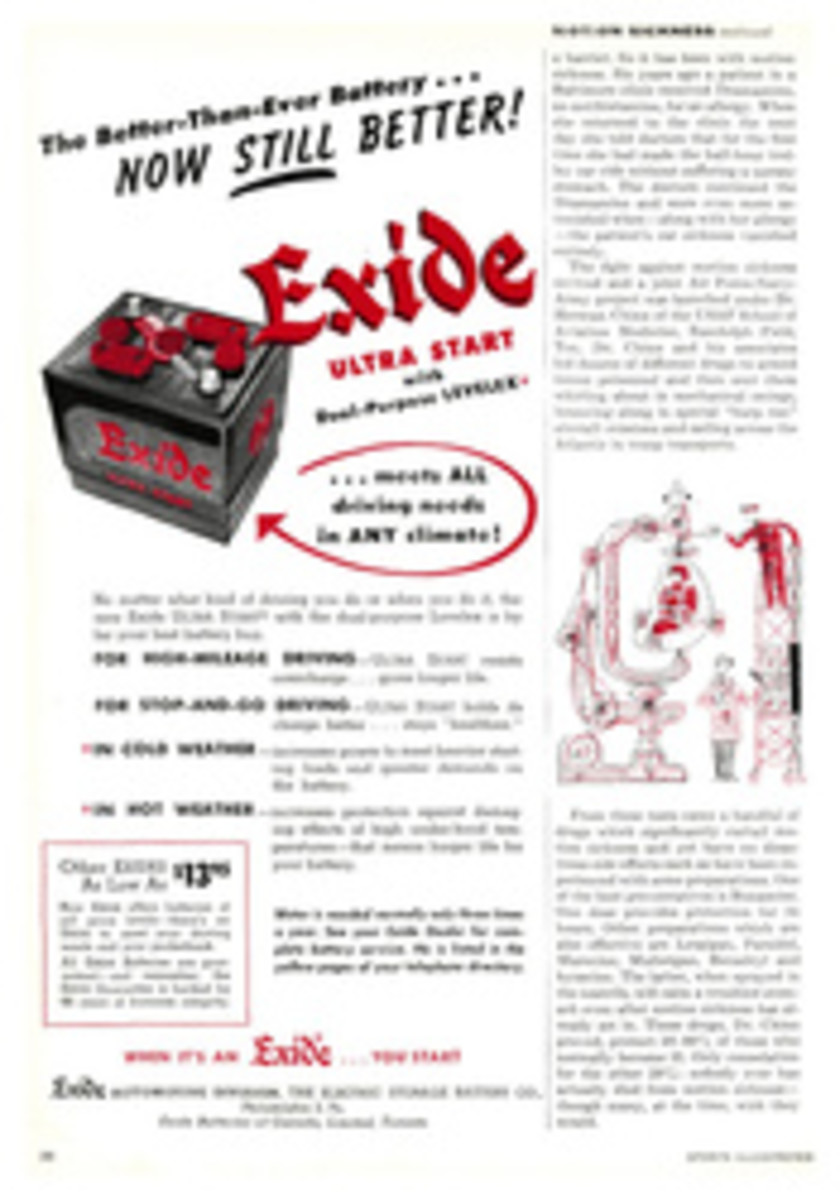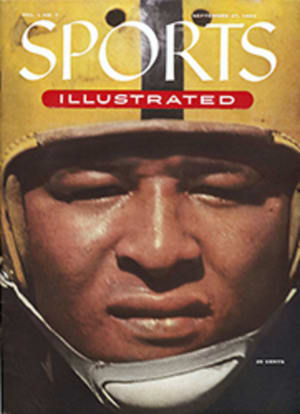
MUNICIPAL STADIUM
The fans of Cleveland are immensely proud of Municipal Stadium, where the third, fourth and fifth games of the World Series are due to be played on Friday, Saturday and Sunday (Oct. 1-3). A vast circular pile of buff brick on the shores of Lake Erie, it has a regular seating capacity of 74,600—the largest in baseball. With standing room, the stadium can accommodate more than 85,000.
For the Series, box seats will cost $10 and reserved seats $7. Bleacher tickets will sell at $2 and standing room (with closer view) $4.
The stadium was built by the city (for civic and athletic events) in 1928 and cost more than $4,000,000. It became the Indians' tepee only in 1946, when Bill Veeck, an astute promoter who could see that Cleveland was a better baseball team than it appeared to be, acquired the club and moved the games from old League Park where capacity was only 27,000. One of the first things Veeck did on moving to the stadium was to install a five-foot wire fence in the outfield, with its center 410 feet from home plate. This was done in a praiseworthy attempt to furnish the fans with a few over-the-fence home runs.
Municipal Stadium is still not an easy home-run field, with its 320-foot distances along both foul lines and a prevailing north wind off the lake toward home plate. Only 123 have been hit there, by all teams, this season. But Clevelanders take satisfaction in pointing out that the turf of Municipal Stadium's symmetrical playing field is rated by many players the best in the big leagues for smoothness of surface and fast drainage. Cleveland's turf expert, Ernie Bossard, has often hired out as a consultant for other clubs, including the Yankees.
YOU'LL NEVER GET A TAXI
The lake-front layout is no more than half a mile from downtown hotels, and many visiting fans will choose to walk. Taxis, numerous enough on ordinary days, will be hard to come by during the Series. Smart motorists will leave their cars in outlying parking lots and take buses to the games to avoid being trapped in the jam around the stadium.
One thing Cleveland is red-faced about: hotel accommodations are going to be inadequate for the mob of out-of-town fans—possibly as many as 40,000—who will pack into town. Slow to realize that the Indians were really going to win the pennant, after years of finishing second, hotelmen didn't lay plans soon enough.
THE PROSPECT OF MOTELS
Two weeks ago, after the Indians swept a Sunday double-header from the proud Yankees, the hotelmen gathered in harried session to work over an impossible arithmetic problem—how to divide 40,000 into 3,300 hotel rooms, total in the city. The problem is complicated by the fact that a huge convention of iron and steel engineers, preempting 3,200 rooms, will not end until the afternoon of the first game.
"If they were the Daughters of Pocahontas," said a worried Clevelander, "the engineers could be rushed out easily enough. But in Cleveland, where people fancy the rich, ripe smoke of blast furnaces, we don't boot iron and steel men."
Prospect: A lot of baseball fans will wind up in hotels and motels as far away as Akron and Toledo.
VITAL AND VICTUAL
EYES & EARS: Some 650 Sportswriters will turn out 300,000 words a day for about 125 million readers of 1,875 daily papers in the U.S. NBC-TV will take the series to an estimated 45 million more and Mutual radio network will broadcast the big story to another 61 million. Latin American stations, the Armed Forces network and Voice of America transmitters in such out-of-the-way places as the Island of Rhodes in the Mediterranean will take care of the rest of the world.
All told, some part of the series will be seen, heard or read about by 300 million people—roughly one-eighth of the population of the earth.
ILLSTRATION
MATT GREENE
320 ft.
Fence
410 ft.
Veeck's
320 ft.

